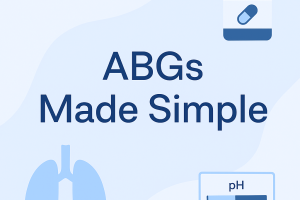PATIENT SAFETY AND QUALITY IMPROVEMENT: CORR NCLEX CONCEPTS

Patient safety and quality improvement are foundational components of nursing practice, directly influencing healthcare outcomes and the well-being of patients. For nursing students and professionals preparing for the NCLEX, mastering these concepts is essential for success on the exam and in clinical practice. This blog explores the principles of patient safety and quality improvement, offering insights and strategies to enhance care delivery while minimizing risks.
What is Patient Safety?
Patient safety refers to the prevention of errors and adverse effects associated with healthcare delivery. It emphasizes creating a culture that prioritizes safety, open communication, and accountability. Common patient safety issues include medication errors, falls, infections, and procedural complications, all of which can have serious or even fatal consequences if not addressed promptly.
Key principles of patient safety include:
• Identifying and mitigating risks proactively.
• Standardizing protocols to ensure consistency in care.
• Promoting open communication among healthcare team members.
• Encouraging a non-punitive environment for reporting errors or near misses.
Core Elements of Quality Improvement
Quality improvement involves systematically improving healthcare processes and outcomes through evidence-based strategies. It focuses on enhancing efficiency, patient satisfaction, and safety. The following elements are critical for quality improvement:
• Data-Driven Decision-Making: Collecting and analyzing data to identify areas for improvement, such as reduced infection rates or shorter hospital stays.
• Interdisciplinary Collaboration: Engaging all members of the healthcare team to address challenges and develop solutions.
• Continuous Monitoring: Regularly evaluating outcomes to ensure sustained improvements.
• Patient-Centered Care: Prioritizing the needs, values, and preferences of patients in all decision-making processes.
By integrating these elements into daily practice, healthcare teams can achieve measurable improvements in patient care.
NCLEX Concepts Related to Patient Safety and Quality Improvement
The NCLEX emphasizes patient safety and quality improvement through several interconnected concepts, including teamwork, error prevention, and communication. Here are some of the most important topics:
1. Teamwork and Collaboration: Effective communication and coordination among healthcare professionals are essential to prevent errors and ensure smooth care transitions. The SBAR (Situation, Background, Assessment, Recommendation) technique is frequently tested on the NCLEX as a communication tool.
2. Error Prevention Strategies: Nurses are expected to understand strategies for reducing medication errors, such as the five rights of medication administration (right patient, right drug, right dose, right route, and right time).
3. Infection Control: Preventing healthcare-associated infections (HAIs) is a critical safety priority. Nurses must adhere to hand hygiene protocols, implement isolation precautions when necessary, and follow sterile technique guidelines.
4. Fall Prevention: Falls are a leading cause of injury in healthcare settings, particularly among older adults. NCLEX questions may test your knowledge of fall prevention strategies, such as using bed alarms, ensuring proper lighting, and conducting regular risk assessments.
The Role of Nurses in Promoting Safety and Quality
Nurses are at the forefront of patient safety and quality improvement efforts. Their roles include:
• Advocating for Patients: Ensuring that patient concerns and preferences are respected during care planning and implementation.
• Identifying Risks: Being vigilant about potential safety hazards, such as medication interactions or unsafe equipment.
• Implementing Evidence-Based Practices: Staying informed about the latest research to provide care that meets current standards.
• Educating Patients and Families: Teaching patients how to manage their conditions safely and effectively at home.
Practical Strategies for Success
To excel in the NCLEX and clinical practice, nursing students should familiarize themselves with practical strategies for enhancing patient safety and quality improvement:
• Use Mnemonics: Techniques like SBAR, ISBAR (Introduce, Situation, Background, Assessment, Recommendation), and the five rights can help you remember key concepts.
• Practice Simulations: Engaging in clinical simulations can enhance your critical thinking and problem-solving skills in a safe learning environment.
• Review Case Studies: Analyze real-world scenarios to understand how safety and quality principles are applied in practice.
• Take Practice Tests: Familiarize yourself with NCLEX-style questions that test your understanding of patient safety and quality improvement.
Sample NCLEX Questions
1. A nurse is administering medications to four patients. Which action demonstrates a violation of the five rights of medication administration?
A. Administering medication without verifying the patient’s identity
B. Checking the medication label three times before administration
C. Clarifying an unclear order with the prescribing provider
D. Documenting the medication administration immediately afterward
Answer: A. Administering medication without verifying the patient’s identity violates the “right patient” principle, which is essential for preventing errors.
2. During a team meeting, a nurse suggests using the SBAR communication tool. What is the primary purpose of this technique?
A. To improve hand hygiene compliance
B. To standardize communication among healthcare providers
C. To identify potential fall risks
D. To streamline medication reconciliation
Answer: B. The SBAR communication tool standardizes information exchange among healthcare providers, promoting clarity and reducing errors.
3. A hospitalized patient is at high risk for falls. Which intervention should the nurse implement first?
A. Provide the patient with nonslip footwear
B. Educate the patient about the importance of using the call light
C. Conduct a fall risk assessment
D. Ensure that the bed is in the lowest position
Answer: C. Conducting a fall risk assessment is the first step to identify the specific needs and appropriate interventions for the patient.
Conclusion
Patient safety and quality improvement are central to delivering high-quality nursing care and ensuring positive outcomes. By mastering these NCLEX concepts, nurses can play a pivotal role in minimizing risks, enhancing efficiency, and advocating for patient-centered care. Whether it’s through effective communication, adherence to protocols, or continuous learning, nurses are instrumental in creating safer healthcare environments. Preparing for these topics not only helps you succeed on the NCLEX but also sets the stage for a fulfilling and impactful nursing career






